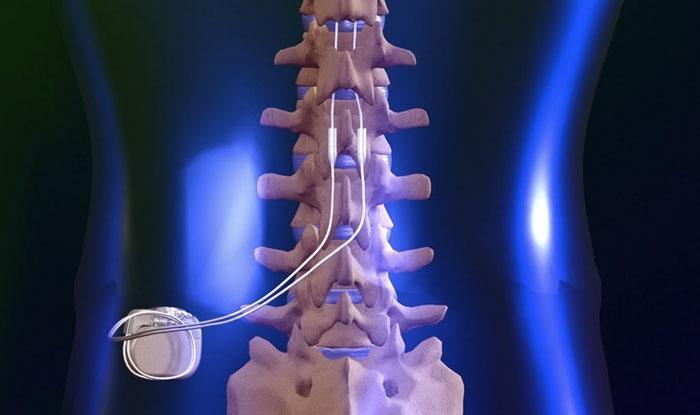Why Choose Spinal Cord Stimulation (Neurostimulation Therapy)?Mar 29, 2018

What is Spinal Cord Stimulation (Neurostimulation Therapy)?
Spinal cord stimulation is delivered with a small spinal cord stimulator—similar to a pacemaker—that is implanted under the skin. The neurostimulator delivers mild electrical pulses to your spine, causing a tingling sensation in the area of your chronic pain.
Pain Management Specialist, California : “The goal of neurostimulation therapy is to improve, quite simply, the patient’s quality of life and pain relief.”
How Spinal Cord Stimulation Works
Spinal cord stimulation provides pain relief by modifying the pain messages before they reach the brain. The neurostimulator sends out mild electrical pulses that reach the brain faster than the pain signal can arrive. In other words, it outsmarts your back and leg pain. Instead of feeling pain, you feel a tingling sensation.
You can adjust the strength and location of stimulation using a handheld programmer. For example, you can regulate different levels of stimulation at different times of the day or for various activities, such as walking, sleeping, or sitting.
Learn about the benefits and risks of spinal cord stimulation
Wondering what spinal cord stimulation feels like? Talk with one of our ambassadors, who has a neurostimulation system for pain and has volunteered to share his or her experience.
Neurostimulation in Action
See how the Medtronic neurostimulator outsmarts pain.
Depending on the neurostimulation system, the device may feature adaptive stimulation that automatically adjusts the level of stimulation when you change positions. Called AdaptiveStim®, this technology remembers the stimulation changes and applies the setting the next time you move into that position.
What Patients Say About Neurostimulation
David,Neurostimulation Therapy Since 2009
“I get very sick when I take oral meds…that was one of the things that kind of moved me towards the spinal cord stimulator because I didn’t have to take anything orally. I just had to hit a button if I was in pain. And that’s a lot better to me.”
Components of the Neurostimulation System
A complete spinal cord stimulation or neurostimulation system includes several components:
Neurostimulator – The device, similar to a pacemaker, that sends mild electrical pulses and is usually surgically implanted under the skin in your abdomen or upper buttock
Leads (pronounced “leeds”) – Thin, insulated medical wires that deliver neurostimulation to the epidural space near the spine
Physician Programmer – A computer at your doctor’s office that lets your doctor adjust the neurostimulation system and set stimulation levels
Handheld Programmer – A device similar to a remote control that you can use at home to optimize pain relief based on how your pain is changing throughout the day or during various activities
Neurostimulation System Components
Take a look at the Medtronic neurostimulation system’s components.
The neurostimulation system does not make any noise. It may be felt as a small bump under your skin, but does not normally show through your clothes.
Protection in the Future
An MRI is an important diagnostic tool and one of the most commonly performed tests in the world. Medtronic spinal cord stimulation systems with SureScan® MRI Technology are the only systems of their kind to relieve chronic pain and allow you safe* access to an MRI scan on any part of your body.
by Eric Grigsby For Tame The Pain
Be the first to post a message!